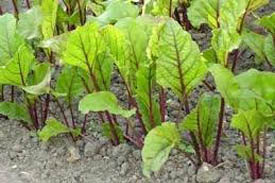Gardening: Weather and Water
Quite often the gardener, or commercial grower assumes that there is enough water, perhaps through wells, rain or watersheds. A great deal of time and money is lost and more will certainly become lost in years to come if we do not understand nature’s process, and make new plans for food production.
Considerable media attention is directed about world food shortages, much of it in Asia and far, far away from us. Drought-the lack of water is the end result of man’s waste, but there is a bigger picture for us to examine.
Let us go back in time, say 30,000 years back when some comets struck the earth and caused a great cover of sun shading resulting in the current ice age. Woolly Mammoths, Saber Tooth Tigers, and a host of lesser animals died out. Ice sheets 3000 feet high moved south and reformed the North Americas; their melting deposited vast underground aquifers of water. Just like the Dinosaur age, 20,000,000 years back the big meteor that struck in the Yucatan snuffed out the dominate reptilian age and allowed mammals to rise as a dominate specie. There have been several major specie extinctions in this planets history.
Considering we are talking about geological time measured in unfathomable periods of millions of years, long before mankind set forth we can briefly see that outer space impacts are one cause of change. After the Dinosaur demise, ferns perished and grass developed. From these grasses in recent time mankind has evolved seed use and we have wheat and related grain foods.
Other factors are effecting us at this time-the sun. Science has afforded us an insight how the sun-far more than a big fire ball 96,000,000 miles from Earth –is a dynamic changing force in our small, backward solar system on the edge of the great Milky Way galaxy. Notably the sun has cycles of activity, currently in a quiet state-which means draught for us. Some of the sun’s cycles are measured from ice core readings and isotope layers found on the earth. Man has only been studying the sun and it’s sun spot activity for the past 500 years in the western world. Other cultures, now long dead, such as the Mayan and Aztec, go further back.
The sun is the driving force of weather on this planet. Herein a sunspot which is a giant seething “vent” under the suns surface spanning millions of miles erupts in 11 year cycles and creates from the sunspots vast solar flares into space. This has an interference with our weather, satellites and electronics when the flare radiation strikes the atmosphere. Also there is a marked increase in earthquakes, volcanoes, and plate shifting. When the flare of radiation strikes the earth it buckles and twists. We will start to notice the flares shown as the Aura Borealis by 2012-2015. The good part is that we may, I repeat may, have more rain fall through hurricanes and typhoons.
Presently the media has been reporting about the massive melting of the ice cap in the North Polar regions. This is creating another problem for the weather as the melting water is affecting the Gulf Stream direction that brings moisture up along the North East coast, and on into Great Brittain and Europe. Some predictions are that this will turn into a desert. Other cherry news on the melting is that massive amounts of moisture are released into the atmosphere and will return as ice and snow. Science has different views at this time, so stay tuned in for the next hundred years and we will see what happens.
The 11-year sunspot cycle is quiet now, much the same as some are longer cycles. Scientists are studying these phenomena but in reading reports when the sun is quiet and sun spot activity is on the bottom cycle, as now, we are in a drought cycle. This cycle will continue and grow worse for the next several years and then, reverse itself; that is if man made warming does not have an effect.
Coupling the global warming caused by mankind’s intervention has probably accelerated the problem and water is going to become scarcer. This is the problem we all have in growing food-no water-no food. Therefore the home food producer must make provisions for storing and managing the garden water supply.
“Oh! You say, “We can pump it out of the ground, we have reservoirs, it will rain…” Let us examine some of these views. First off the huge aquifers are largely depleted from pumping in the mid west and toxic infiltrating contaminates are becoming a health risk. The Great Lakes, the largest of fresh water sources in the world are shrinking along with other major water reserves in the world. Our own NRV area is in a drought, and has been in a drought for years. NRV will remain in a drought condition for many more years-perhaps permanently.
“Floyd has plenty of water…it all flows out…” The fact of the matter is that the aquifer, along the parkway is drying up-probably pumped out. The increase of well digging for new McMansion homes with acres of lawns requiring watering, or just more people demanding their minimum 50 gallons a day for each person keeps sucking water up from the caves and shallow water reserves. What water has been there for eons of time is limited and getting harder to find. One in four wells dug are dry holes. Shallow wells, springs (mine included), and ponds are drying up.
Reservoirs have to be enlarged and refilled with water run off from rivers, and rain. The last water scare for Roanoke was in 2002 and the water source was very dry. I doubt that the reservoirs had been enlarged for the growing population. I do want to comment positive news that the Governor’s office has made water resource a priority, but economic problems of late will certainly curtail much progress, after all you cannot make water.
The Virginia State Congress of lawmakers are pulling their hair trying to figure a way to regulate the consumption of private wells. No doubt the end result will be some form of taxation on our well water. Certainly the homes connected to the pipes in the cities will be taxed, more and more, and probably will have “water hours” enforced.
One serious comment made recently is that people will have to dig cisterns in their yards for water storage. This is an option, as years back in this area before modern well digging people did dig cisterns under their house, usually the front porch and collected rainwater. When you watch TV about the mid east-look in the background at the roofs of the houses. They all have roof top water collectors. Is this a peek at our future, or our children’s future?
So where does all this water shortage and extinction concerns bring us gardeners into focus. Simply put if you do not make provisions for water in your garden, aside from decreasing warm weather decreasing rainfalls, you might as well grow cactus. The next several articles will be discussing what you can do to grow food with improved water retention techniques I have formulated that actually work; with pictures.
Contact me at: back2theland@swva.net
COPYRIGHT: 2009, Back2theLand.com, Mark Steel



